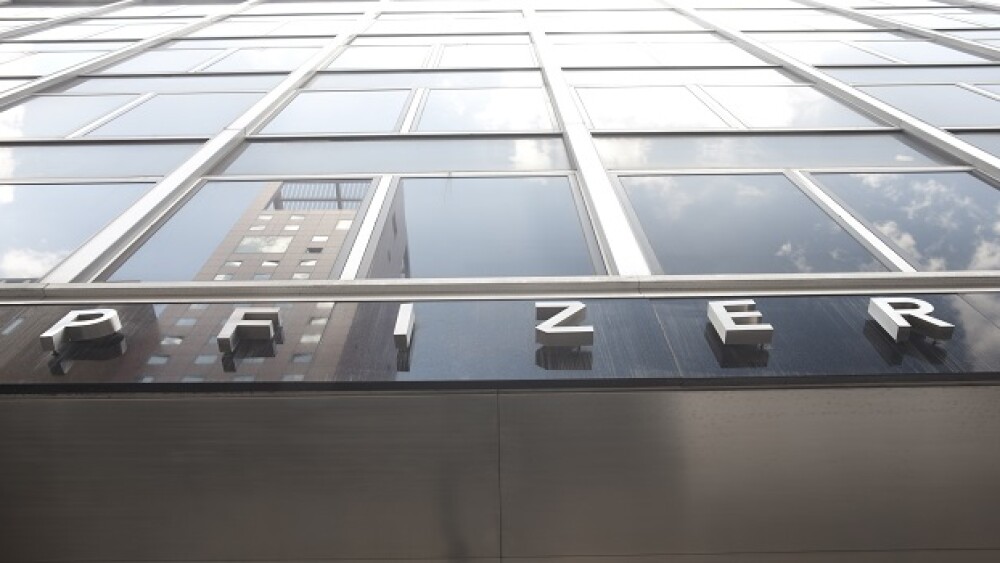The president’s predictions for lower drug prices fell on deaf ears at pharma giant Pfizer as it was reported that the company increased the price of 40 of its most popularly-prescribed medications by nearly 10 percent.
In May President Donald Trump predicted a “massive drops” in drug prices following the signing of the Right-to-Try legislation, as well as a Health and Human Services initiative he called “the most sweeping action in history” to lower the cost of prescription drug prices.
The president’s predictions for lower drug prices fell on deaf ears at pharma giant Pfizer. The Wall Street Journal reported that the company increased the price of 40 of its most popularly-prescribed medications by nearly 10 percent. The Journal noted that some of the drugs that saw a price increase include cancer drug Xalkori (+ 9.4 percent), pain treatment Lyrica (+ 4 percent), cholesterol drug Lipitor (+ 9.4 percent), anti-smoking drug Chantix (+ 7 percent), depression drug Zoloft (+ 9.4 percent) and blood pressure medication Norvasc (+ 9.4 percent). This was the second time this year that Pfizer has increased the prices of some of its prescription medications, the Journal reported.
For the pharma companies, most argue that they do not profit much from the increase in prices due to the discounts and rebates offered to drug benefits managers.
In response to the Journal, Pfizer said many of its medications are sold at a discount. The company also noted that it is not responsible for “how much patients must bear in copays or other out-of-pocket costs,” the Journal said. For the majority of Pfizer medications, the company said its list price remains unchanged.
“We are modifying prices for about 10 percent of our medicines, including some instances where we’re decreasing the price,” the company told the Journal.
Pfizer wasn’t alone in its move to increase prices this week. The Journal also reported that Sanofi SA increased the costs of eczema drug Dupixent by 3 percent. Sanofi and its development partner Regeneron told the Journal that the 3 percent increase is the only planned increase for that medication this year.
In a noted to investors, Raymond James analyst Elliot Wilbur said that “Sub-6 percent inflation levels are here to stay,” the Journal said.
The price of prescription medications has been a political hot-button for several years. Prior to being sworn in as president, Trump said that pharmaceutical companies are “getting away with murder” when it comes to the prices the companies charge for medication.
With the outcry, many drugmakers have pledged to only address potential price increases once per year. Last year Merck pulled back the curtain on its pricing practices in the United States by publishing a “Pricing Action Transparency Report” for 2016. In its disclosure, Merck noted that the pricing takes into account rebates, discounts and returns. Allergan’s Chief Executive Officer Brent Saunders publicly vowed to keep price increases on the company’s drugs under 10 percent in 2017. Last month Celgene Chief Executive Officer Mark Alles posted a note on the company website that set fort its approach to price increases. Alles said any increase posted by Celgene “will be limited to no more than once a year and at a level no greater than the Centers for Medicare and Medicaid Services projected an increase in National Health Expenditures for the year.” For 2018, that rate is 5.3 percent, Alles wrote. However, Alles also noted that there could be “exceptional circumstances” that might force the company to increase a price beyond that threshold.
In a separate article, the Journal noted that July is a popular month for pharmaceutical companies to quietly raise the prices of their medications. It’s something that the Trump administration is apparently paying some attention to. HHS Secretary Alex Azar told a congressional panel last week that he hopes companies will “practice restraint” when it comes to increasing the prices of prescription drugs, the Journal reported.





